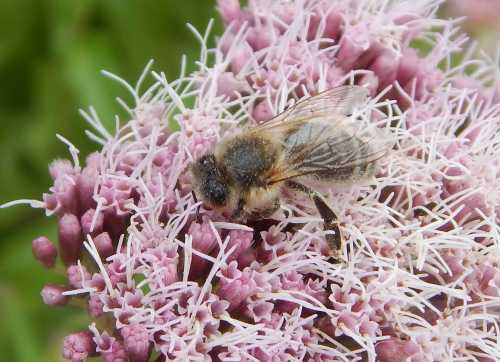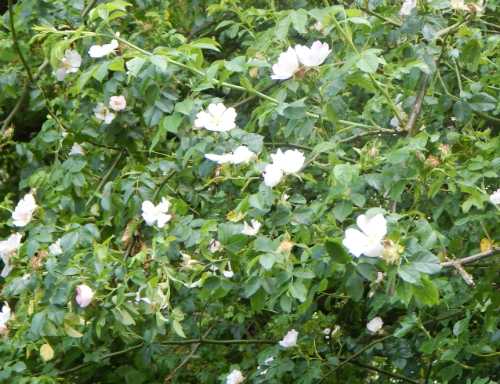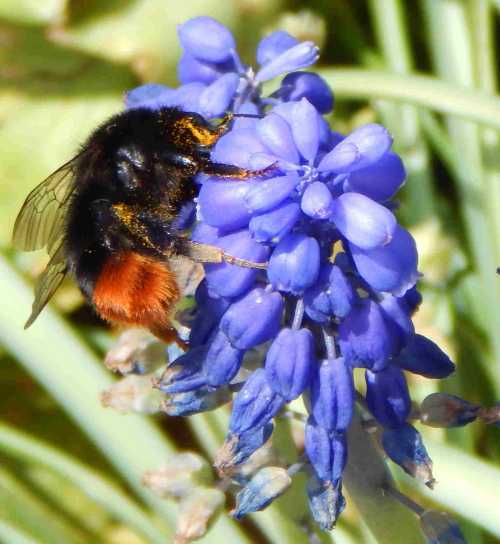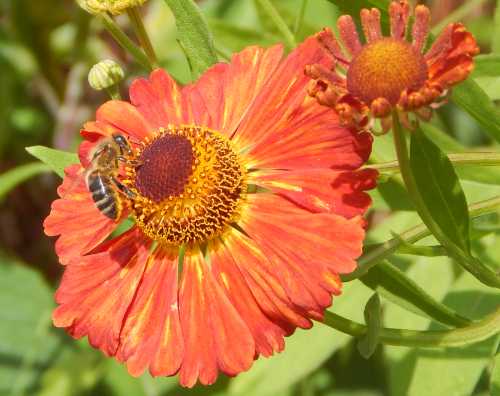Plants Toxic for Bees
It may surprise people to learn that some plants are toxic for bees, or at least have unfortunate effects.
I have written about this
subject previously with regard to certain species of lime tree (Tillia) which may poison or
at the least, have narcotic effects on some bee species.
Below, you will find a list of plants believed to have detrimental effects on bees, and the published reference source. I also outline some of the theories regarding the reasons that some plants are toxic to bees.
List Of Plants Toxic For Bees
Note this website receives visitors from all over the world - you may or may not have any of these plants in your own country).
The source of this information is an excellent paper I came across - The Ecological Significance Of Toxic Nectar by Lynn S. Adler (OIKOS 91: 409 – 420. Copenhagen 20001).
| Plant Species & Family | Effects On Bees | Publ. Reference |
|---|---|---|
| Aesculus californica (Hippocastanaceae) Astragalus spp. (Fabaceae) Cuscuta spp. (Convolvulaceae) Cyrilla racemiflora (Cyrilliceae) Gelsemium sempervirens (Loganiaceae) Kalmia latifolia (Ericaceae) Solanum nigram (Solacanaceae) Veratrum californicum (Liliaceae) Zygadenus cenesosus (Liliaceae) | Toxic to bees | Eckert 1946, Mussen 1979 |
Corynocarpus laevigata (Corynocarpaceae) | Toxic to honey bees | Palmer-Jones and Line 1962 |
Angelica triqueta (Apiciaceae) | Toxic to bees | Bell 1971 |
Astragalus lentiginosus (Fabaceae) | Toxic to bees | Vansell and Watkins 1934 |
Camellia thea (Theaceae) | Lethal to honey bee larvae | Sharma et al. 1986 |
Ochrama lagopus (Bombacaceae) | Toxic to bees and other insects | Paula et al. 1997 |
Sophora microphylla (Fabaceae) | Toxic to honey bees | Clinch et al. 1972 |
Tilia spp. (Tiliaceae) (Read more about Tilia and toxicity to bees) | Toxic to bees and other insects | Crane 1977 |
Verartrum californicum (Liliaceae) | Toxic to bees | Vansell and Watkins 1933 |
Asclepias spp. (Apocynaceae) | Toxic to bees | Pryce-Jones 1942 |
Astragalus miser v. serotibus (Fabaceae) | Toxic to honey bees | Majak et al. 1980 |
Rhododendrum spp. and hybrids (Ericaceae) | Toxic to bees | Carey et al. 1959 |
Whilst some plants contain nectar believed to act as a deterrent to bees, other plants produce nectar that results in honey that is unpleasant or creates toxic honey for humans. Indeed, toxic honey was even used in a kind of chemical warfare in ancient times.
Why are some plants toxic for bees?
Key questions include:
- Do certain plants seek to deter particular pollinators in order to attract ‘the right ones’?
- Why are some plants poisonous for certain insects but not others?
Here are three theories I came across, that attempt to explain the existence of plants toxic to bees:
1. A Faithful Partner: – The 'Pollinator Fidelity Hypothesis'
Do some plants require specialization of pollinators? Such a theory has been proposed by scientists
Rhoades and Bergdahl (1981).
They
proposed that toxic nectar may be the way in which flowers increase
pollinator
fidelity, by repelling rather than attracting the ‘generalist
pollinators’, or at least insects which are less effective as
pollinators of the plant species.
In other words, toxic nectar may benefit those plants requiring specialization of pollinators.
Plants are thought to do this in other ways too, for example, by nectar being inaccessible to certain pollinators or insects species, whilst being accessible to others.
2. Stop That Thief!: The 'Nectar Robbery Hypothesis'
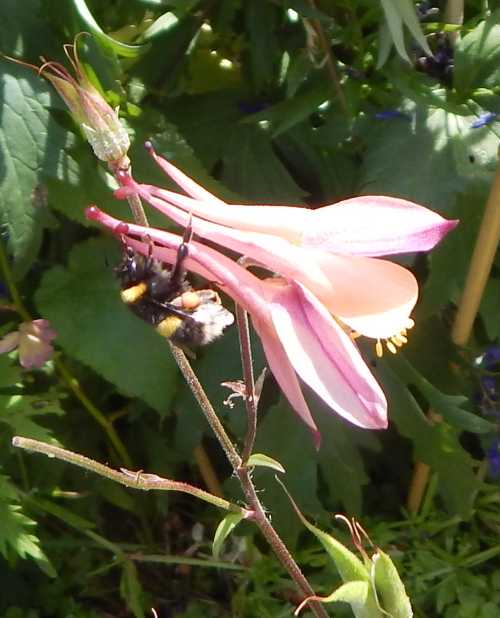 Could toxic nectar prevent nectar robbery?
Could toxic nectar prevent nectar robbery?
Another theory is that toxic nectar may deter nectar robbery (nectar larceny).
Nectar
robbing occurring when an insect such as the ant, removes the nectar without
actually pollinating the flower.
Stephenson (1981, 1982) found that ants and skippers who were offered the nectar of Catalpa speciosa, or a sugar solution of the same concentration, preferred the latter, and that the individuals drinking the nectar exhibited signs of disorientation or narcosis.
Interestingly, ‘legitimate bee pollinators’ of the plant were not affected by the nectar, and showed no sign of preferring the sucrose solution to the nectar.
3. Sozzled Bumble Bees? Tipsy Wasps?: The 'Drunken Pollinator Hypothesis'
In the orchids Epipactis purpurator and E. helleborine, toxic nectar is
produced by ethanol caused by micro-organisms contaminating the nectar, carried
from the air or transferred by insects.
According to Ehlers and Olesen (1997), wasps drinking the nectar become sluggish and intoxicated, and this causes the wasps to groom less (well, I suppose drunken humans might not do a very good job of combing their hair either!).
The prevention of
grooming means that more pollen is transferred between the orchid plants
themselves, thus serving the pollination aims of the plant.
Drunken effects are noted in other cases. Bumble bees drinking the nectar of Asclepias flowers also show signs of being, well….sozzled (Kevan et al 1988).
The plants may not necessarily get their way though - some raise the question whether getting the bees drunk always benefits the flowers if the narcotic effects result in death, thus preventing pollination (Bell 1971, Clinch et al 1972).
References
1. Adler, L.S. (2000), The ecological significance of toxic nectar. Oikos, 91: 409-420. https://doi.org/10.1034/j.1600-0706.2000.910301.x
If you found this page helpful or interesting, I'd really be grateful if you would share it with others - if not this page, perhaps another, such as Gardening For Bees.
Thank you so much :) .
